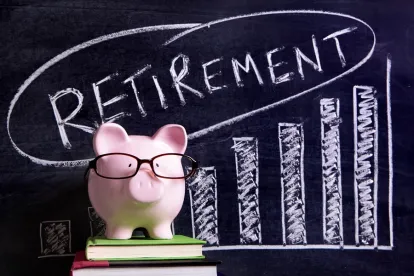Last week, the U.S. House of Representatives passed the Setting Every Community Up for Retirement Enhancements (SECURE) Act of 2019. To become law, the bill still needs to be passed by the Senate and signed by the President. Because there appears to be bipartisan support, there is a chance that some form of the SECURE Act could be signed into law.
The SECURE Act contains several provisions that would significantly change qualified retirement plan design and operation. Below is a summary of some of the key changes that will affect plan sponsors. Many of the details would be left to interpretation by the IRS and Department of Labor.
-
Expansion of part-time employee eligibility: Under existing law, a section 401(k) plan may exclude part-time employees from participation if they do not complete at least 1,000 hours of service in a year. The bill would reduce the threshold to 500 hours for any employee who completes at least 500 hours per year in three consecutive years (“long-term part-time employees”); and any employee who completes 1,000 hours in a plan year would have the same rights as under existing law. This rule would not apply to collectively-bargained plans and it would not limit the ability to exclude employees for other reasons (subject to passing the nondiscrimination “coverage” test), such as position or job title. Also, this rule does not affect the ability to impose up to a two-year waiting period for employer contributions or to limit participation to employees age 21 and older. Effective date: Plan years beginning after December 31, 2020, except that for purposes of the new eligibility criteria, 12-month periods beginning before January 1, 2021 will not be taken into account.
-
Changes to section 401(k) safe harbor plans: The bill includes two significant changes to section 401(k) safe harbor plans:
-
Nonelective 401(k) safe harbor plans: Under current law, if an employer sponsors a section 401(k) safe harbor plan, eligible employees must be provided with notices describing the safe harbor provisions. The bill eliminates the notice requirement for nonelective safe harbor 401(k) plans—that is, safe harbor plans under which the employer provides a nonelective contribution of no less than 3% of the employee’s compensation, rather than matching contributions. The bill would also allow a retroactive election to convert to nonelective safe harbor status; if the nonelective contribution is at least 4% of compensation, the election could be made as late as the end of the next following plan year. Effective date: Plan years beginning after December 31, 2019.
-
Increase to cap on default rate for automatic enrollment 401(k) safe harbor plans: The bill increases the cap on the default rate for contributions under a qualified automatic contribution arrangement (“QACA”) from 10 percent (current law) of compensation to 15 percent for years after the default contributions have started. Effective date: Plan years beginning after December 31, 2019.
-
Addition of “qualified birth or adoption distributions”: The bill would allow in-service withdrawals from elective deferral contribution accounts of up to $5,000 (per spouse) within one year after birth or adoption of a qualifying child. Participants would be permitted to “repay” qualified birth or adoption distributions to certain qualified plans. Effective date: Applies to distributions made after December 31, 2019.
-
Prohibition on using credit card arrangements for plan loans: Some qualified plans permit participants to access plan loans through credit cards or similar mechanisms. The bill would prohibit plan loans through the use of a credit or debit card. Effective date: Applies to loans made after the date of enactment.
-
New lifetime income disclosure requirement: The bill would require that defined contribution plan participants receive annual “lifetime income disclosures.” This disclosure would have to show an amount of monthly income the participant could receive if his or her plan account were paid as an annuity. This requirement would apply even if the underlying plan does not offer annuities as a distribution option, and even though the actual annuity available would depend on investment performance and premium rates available from insurers. The bill includes relief from fiduciary liability if the disclosure uses safe harbor actuarial assumptions and includes model language to be prepared by the Department of Labor. Effective date: Applies to benefit statements provided more than 12 months after the Department of Labor issues (1) interim final rules, (2) the model disclosure, and (3) prescribed assumptions.
-
New portability for lifetime income investment options: Some plans offer investment options with lifetime income features. If these investment options are removed from a plan’s investment lineup, participants would be permitted to take a distribution of the investment option without regard to restrictions on in-service distributions – either by a direct rollover to an IRA or retirement plan or through a direct distribution to the individual. Effective date: Plan years beginning after December 31, 2019.
-
Nondiscrimination testing relief for closed defined benefit plans: The bill extends nondiscrimination testing relief to certain closed defined benefit plans. Among other items, the bill expands the availability of cross-testing (aggregating defined benefit plans with defined contribution plans and testing on the basis of equivalent annuities), including to allow cross-testing with certain matching contributions. To be eligible for this relief, the closed defined benefit plan must have either (1) been closed before April 5, 2017, or (2) been in effect for at least five years without a substantial increase in coverage or the value of benefits in the last five years. Effective date: Date of enactment, or, at the election of a plan sponsor, plan years beginning after December 31, 2013.
-
Changes to minimum required distributions: The bill delays the “required beginning date” from age 70½ to age 72 for distributions from retirement plans and IRAs. For death benefits, the bill would require defined contribution accounts to be distributed within 10 years after the participant’s death, except where the beneficiary is not more than 10 years younger than the participant or the beneficiary is a surviving spouse or disabled individual; a special rule would apply for minor children. The bill also repeals the current prohibition on individuals over age 70½ making non-rollover contributions to traditional IRAs, aligning with the rules for contributions to employer-sponsored retirement plans and Roth IRAs. Effective dates: Effective for distributions required to be made after December 31, 2019, with respect to individuals who attain age 70½ after such date, and distributions for employees who die after December 31, 2019. Effective for contributions made to traditional IRAs for taxable years beginning after December 31, 2019. A transition rule applies for certain collective bargaining agreements.
-
New statutory safe harbor for annuity provider selection: The bill includes a new fiduciary safe harbor for the selection of a lifetime income provider. Under the safe harbor, the prudent person requirement will be deemed met if: (1) the fiduciary engages in an objective, thorough and analytical search for providers; (2) the fiduciary considers the financial capability of a provider to satisfy obligations under the contract and considers the contract cost in relation to the benefits and services to be provided thereunder; and (3) on the basis of the foregoing, concludes that, at the time of the selection, the provider is financially capable of satisfying its obligations under the contract and that the contract cost in relation to the benefits and services to be provided under the contract is reasonable. Further, a fiduciary will be deemed to have met the requirement to have considered the financial capability of the provider and to have concluded that the provider is financially capable of satisfying its obligations if the fiduciary obtains certain written representations from the provider and meets other requirements. Effective date: Effective upon enactment.
-
More changes: In addition to the items summarized above, the bill contains changes intended to boost retirement savings and security, including provisions that: (1) increase the availability of open multiple employer plans; (2) increase tax credits for small employers starting retirement plans and add tax credits for small employers that include automatic enrollment features in a retirement plan; (3) increase penalties relating to the failure to file Form 5500 and other notices (annual registration, notification of change of status, and withholding notices); (4) require the Treasury to issue certain guidance regarding the termination of 403(b) custodial accounts within six months of enactment; and (5) direct the IRS and Department of Labor to develop a consolidated Form 5500 for defined contribution plans with the same trustee, named fiduciary, administrator, plan year, and investment lineup.





 />i
/>i
